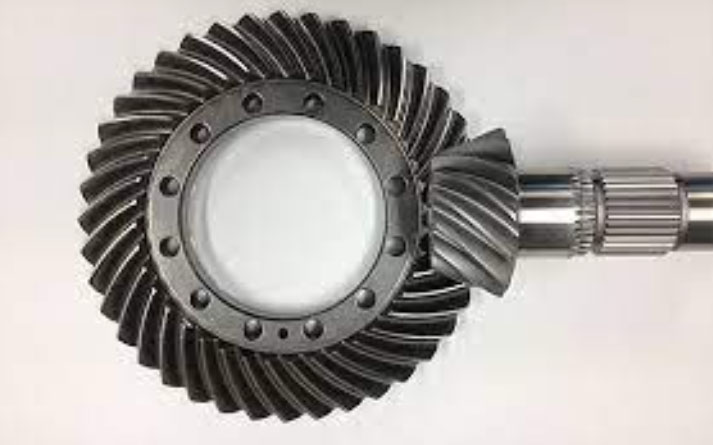
Hypoid gears have a distinct tooth geometry and operate based on specific principles. Let’s take a closer look at their tooth geometry and the fundamental principles of hypoid gear operation:
Tooth Geometry:
- Hyperboloidal Shape: Hypoid gear tooth surfaces have a hyperboloidal shape, which combines features of both helical and spiral bevel gears. The hyperboloidal shape allows for smooth and gradual tooth contact during meshing, reducing noise and vibration.
- Offset Axes: Hypoid gears have offset axes, meaning the axes of the driving and driven shafts do not intersect. The offset creates a hypoid shape when the gears are viewed from the side.
- Pitch Surfaces: The theoretical surfaces that represent the contact between the driving and driven gears are called pitch surfaces. The pitch surfaces of hypoid gears are hyperboloids of revolution, resulting in a sliding action during gear meshing.
- Pitch Cone Angle: The angle formed between the axis of the gear and the pitch surface is called the pitch cone angle. In hypoid gears, this angle is larger than in bevel gears, contributing to the offset design and unique tooth geometry.
- Pinion and Gear Interactions: Hypoid gears consist of a pinion (smaller gear) and a gear (larger gear). The pinion has a smaller pitch cone angle than the gear. The offset of the gear axes allows for proper engagement and power transmission.
Operation Principles:
- Smooth Sliding Action: During gear meshing, the teeth of hypoid gears slide against each other due to the hyperboloidal tooth shape and offset axes. This sliding action distributes the load and reduces the impact of tooth contact, resulting in smoother operation and lower noise levels.
- Tangential Contact: Hypoid gears achieve gear meshing primarily through tangential contact between the teeth. The tangential force facilitates torque transmission and power transfer from the driving gear (pinion) to the driven gear.
- Axial Thrust: The offset design of hypoid gears results in the generation of axial thrust forces during operation. These forces act in the direction parallel to the gear axis and must be accounted for in gear system design and properly managed to ensure smooth operation and prevent premature wear.
- Lubrication and Cooling: Due to the sliding action of the teeth, hypoid gears require effective lubrication and cooling. Lubrication helps reduce friction and wear, while cooling systems prevent excessive heat buildup and maintain gear performance.
- Load Distribution: The offset axes and hyperboloidal tooth shape of hypoid gears contribute to improved load distribution across the gear teeth. This helps minimize stress concentrations and increases gear system durability.
- Misalignment Sensitivity: Hypoid gears are sensitive to misalignment between the pinion and gear. Proper alignment during installation is crucial to ensure optimal gear meshing, prevent noise and vibration, and extend gear system life.
Understanding the tooth geometry and operation principles of hypoid gears is essential for designing and utilizing them effectively in various applications. Proper design considerations, including tooth profile optimization, lubrication requirements, and axial thrust management, contribute to reliable and efficient gear system performance.
